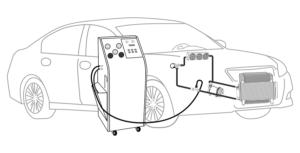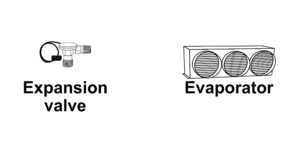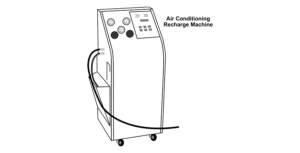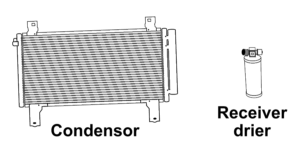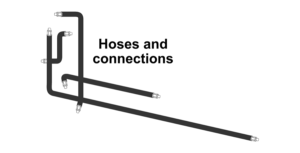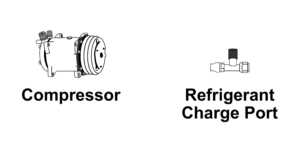Climate control systems are integral to modern living, enhancing comfort, productivity, and energy efficiency in both residential and commercial spaces. These systems regulate indoor temperature, humidity, ventilation, and air quality, ensuring optimal environmental conditions regardless of external weather changes. From traditional heating and cooling units to advanced smart climate control systems, the technology has evolved significantly, driven by the need for energy efficiency, environmental sustainability, and occupant comfort.
Whether installed in homes, offices, factories, or vehicles, climate control systems operate on the same fundamental principle: maintaining the indoor environment within a comfortable range for human activity. They utilize mechanical, electrical, and electronic components to heat, cool, filter, humidify, and circulate air. This article provides an in-depth look at climate control systems, exploring their history, components, types, functionality, benefits, and the latest innovations.
1. History and Evolution of Climate Control Systems
The concept of indoor climate regulation dates back to ancient civilizations. Early methods included Roman hypocaust systems for underfloor heating, Persian windcatchers for ventilation, and ice storage for cooling in hot climates.
The modern era of climate control began in the early 20th century:
-
1902: Willis Carrier invented the first modern air conditioning system to control temperature and humidity in a printing plant.
-
1930s–1950s: Residential and commercial air conditioning units became more common, improving comfort and productivity.
-
1970s Energy Crisis: Led to a focus on energy-efficient HVAC designs.
-
21st Century: The introduction of smart thermostats, variable refrigerant flow (VRF) systems, and eco-friendly refrigerants transformed climate control into a highly efficient, automated process.
2. Types of Climate Control Systems
Climate control systems come in various forms, each suited for specific environments and purposes. The main categories include:
2.1 HVAC (Heating, Ventilation, and Air Conditioning)
The most common and comprehensive climate control setup. HVAC systems combine:
-
Heating: Furnaces, boilers, or heat pumps to raise indoor temperatures.
-
Ventilation: Fresh air intake, air circulation, and filtration.
-
Cooling: Air conditioners, chillers, or evaporative coolers.
2.2 Zoned Climate Control
This system divides a building into zones, each with independent temperature control. Ideal for large buildings, it reduces energy waste and maximizes comfort.
2.3 Vehicle Climate Control
Automobiles use compact HVAC systems that regulate cabin temperature and airflow. Advanced systems feature dual or tri-zone control, allowing different passengers to set different comfort levels.
2.4 Smart Climate Control Systems
Connected to IoT platforms, these systems can be controlled remotely via apps and integrate with home automation setups. They use AI algorithms to learn user preferences and optimize energy use.
2.5 Industrial and Specialized Climate Control
Cleanrooms, data centers, greenhouses, and manufacturing plants require precise climate control to protect products, equipment, or processes.
3. Main Components of Climate Control Systems
Every climate control system includes several essential components, regardless of its complexity.
3.1 Thermostat
The control center of the system. It detects temperature changes and sends signals to the heating or cooling units.
3.2 Heating Units
-
Furnaces: Burn fuel (gas, oil, propane) or use electricity to heat air.
-
Boilers: Heat water for steam or hot water heating systems.
-
Heat Pumps: Transfer heat between indoors and outdoors.
3.3 Cooling Units
-
Air Conditioners: Use refrigeration cycles to remove heat.
-
Chillers: Cool water for large-scale cooling applications.
-
Evaporative Coolers: Use water evaporation for cooling in dry climates.
3.4 Ventilation Systems
Include fans, ducts, air filters, and vents to circulate fresh air and remove stale air.
3.5 Humidity Control
Humidifiers add moisture; dehumidifiers remove excess humidity.
3.6 Air Filtration and Purification
HEPA filters, electrostatic filters, and UV purification systems remove dust, allergens, and pathogens.
4. How Climate Control Systems Work
The working process can be broken down into the following stages:
-
Temperature Sensing: The thermostat measures indoor conditions.
-
Signal Transmission: Based on set parameters, it activates heating or cooling units.
-
Air Treatment: Air is heated, cooled, filtered, humidified, or dehumidified.
-
Air Distribution: Fans and ductwork circulate conditioned air.
-
Exhaust and Ventilation: Stale air is expelled, and fresh air is introduced.
-
Monitoring and Adjustment: Continuous feedback ensures consistent comfort.
5. Benefits of Climate Control Systems
5.1 Comfort
Maintains consistent temperature and humidity levels for optimal comfort.
5.2 Energy Efficiency
Modern systems optimize energy use, lowering utility bills.
5.3 Health and Air Quality
Filters and purifiers reduce allergens, pollutants, and bacteria.
5.4 Productivity
In workplaces, comfortable environments boost concentration and efficiency.
5.5 Protection of Equipment and Materials
Climate control prevents damage to electronics, artwork, and sensitive materials.
6. Common Problems and Troubleshooting
Like any complex machinery, climate control systems can develop issues.
-
Poor Airflow: Often caused by clogged filters, duct leaks, or failing fans.
-
Inconsistent Temperatures: May result from faulty thermostats or zoning malfunctions.
-
Strange Noises: Could indicate loose parts, motor issues, or debris.
-
Water Leaks: Usually linked to blocked drainage or refrigerant problems.
-
High Energy Bills: Often due to inefficient components or improper settings.
Routine maintenance can prevent many of these issues.
7. Maintenance Practices
Proper maintenance ensures longevity and efficiency.
7.1 Regular Filter Replacement
Replace or clean filters every 1–3 months.
7.2 Annual Professional Inspections
HVAC technicians can detect issues before they become serious.
7.3 Cleaning Ducts and Coils
Prevents dust buildup and improves efficiency.
7.4 Refrigerant Level Checks
Ensure proper cooling performance.
7.5 Calibration of Thermostats
Maintains accurate temperature control.
8. Energy Efficiency and Sustainability
Climate control accounts for a significant portion of global energy consumption. Sustainable practices include:
-
Using programmable thermostats.
-
Upgrading to energy-efficient units.
-
Sealing ducts and insulating buildings.
-
Choosing systems that use eco-friendly refrigerants.
-
Integrating renewable energy sources such as solar power.
9. Future Trends in Climate Control Systems
The future points toward smarter, greener, and more adaptable systems.
9.1 AI and Machine Learning
Systems will predict and adapt to user behavior for maximum efficiency.
9.2 Renewable Integration
Solar, geothermal, and hybrid systems will reduce carbon footprints.
9.3 Advanced Sensors
Real-time monitoring of temperature, humidity, air quality, and occupancy.
9.4 Decentralized Climate Control
Portable and personal climate systems for individual comfort.
9.5 Enhanced Air Purification
Integration with health monitoring to adjust air quality dynamically.
10. Climate Control in Different Environments
10.1 Residential Applications
Focuses on comfort, energy savings, and ease of control.
10.2 Commercial Buildings
Emphasizes scalability, zoning, and centralized control.
10.3 Industrial Facilities
Requires precision and robust systems to protect equipment and processes.
10.4 Vehicles
Demands compact, responsive, and durable systems for changing conditions.
11. Choosing the Right Climate Control System
When selecting a system, consider:
-
Size and layout of the space.
-
Climate and seasonal variation.
-
Energy efficiency ratings (SEER, HSPF, AFUE).
-
Initial cost vs. long-term savings.
-
Availability of service and parts.
-
Integration with smart home systems.
Conclusion
Climate control systems are no longer just a luxury—they are a necessity for comfort, health, productivity, and environmental control. Whether in homes, offices, factories, or vehicles, these systems play a critical role in modern life. With advancing technology, future systems will be smarter, more efficient, and more sustainable, aligning with global efforts to reduce energy consumption and environmental impact.
By understanding how these systems work, maintaining them properly, and choosing the right setup for your needs, you can enjoy reliable comfort and energy savings for years to come.
We proudly service the Air Conditioning System Diagnostic needs of customers in Corona, CA |Riverside, CA | Eastvale, CA |Norco CA |Rancho Cucamonga, CA | San Bernardino, CA |Fontana, CA |Chino, CA |and surrounding areas
